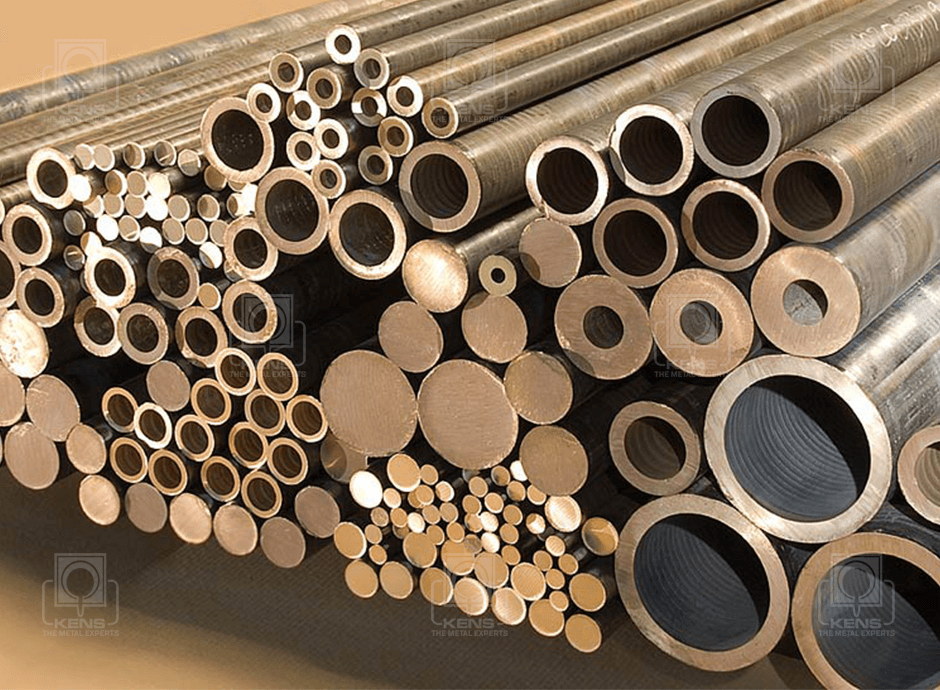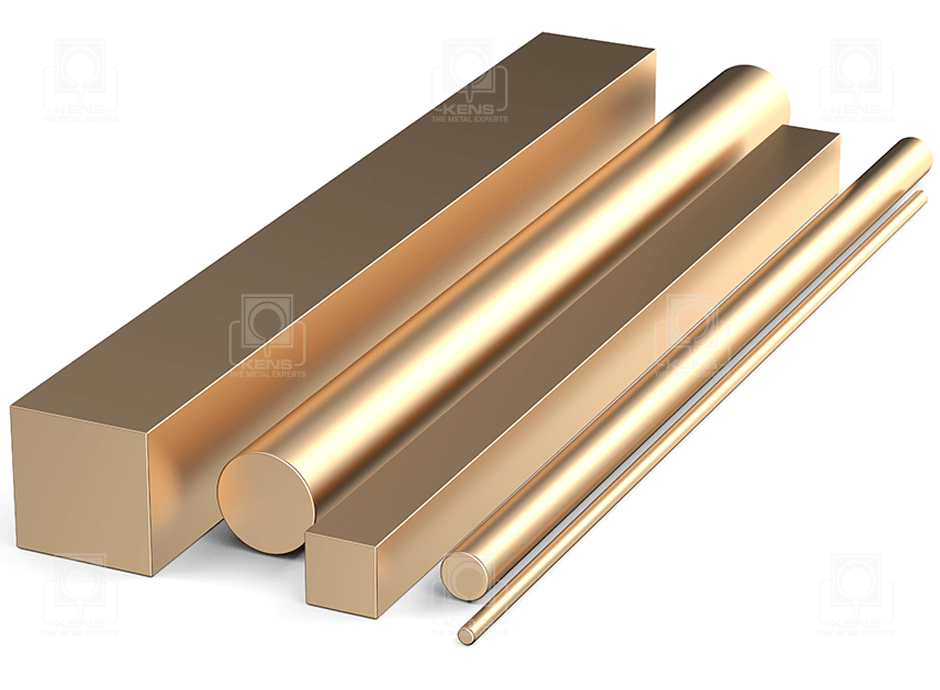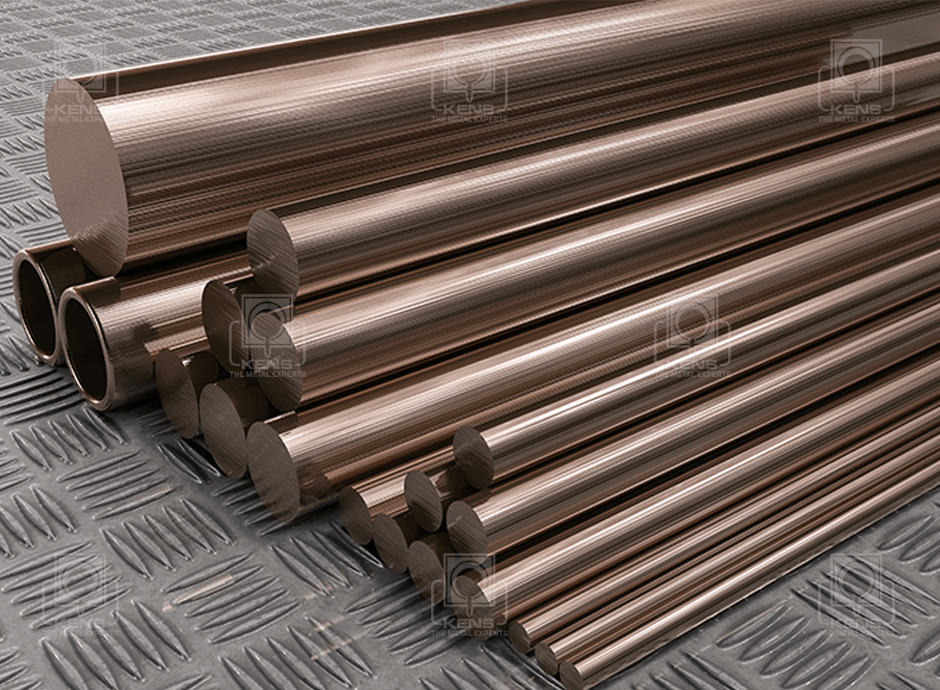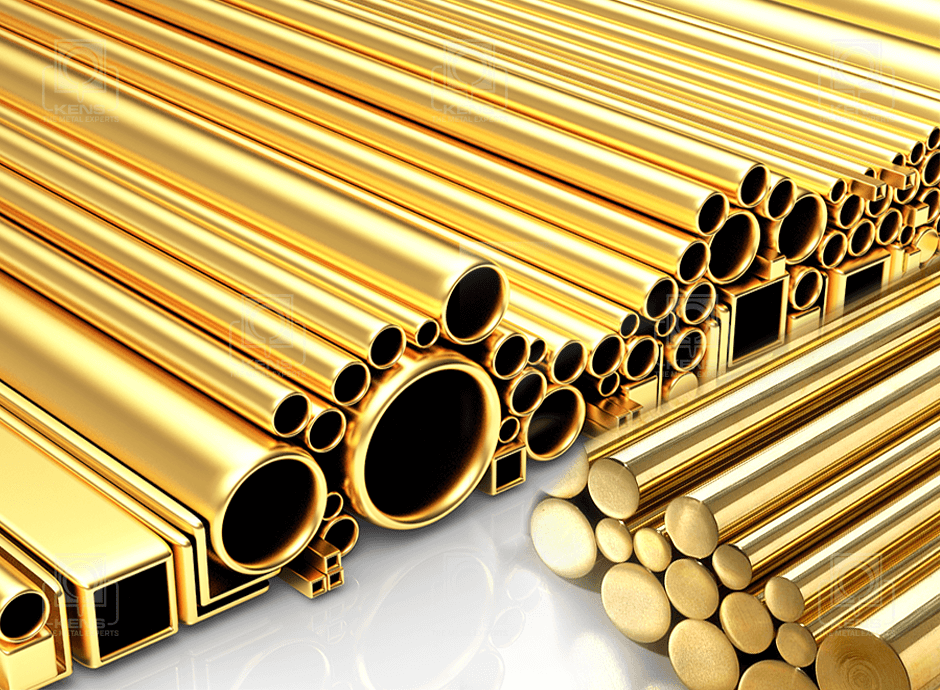Copper is used in a wide range of products due to its excellent electrical and thermal conductivity, good strength, good formability and resistance to corrosion. Pipe and pipe fittings are commonly manufactured from these metals due to their corrosion resistance. They can be readily soldered and brazed, and many can be welded by various gas, arc and resistance methods. They can be polished and buffed to almost any desired texture and luster. Pure copper is rather soft and malleable and a freshly exposed surface has a pink or peach color.

| Element | Copper |
|---|---|
| Content (%) | 99.99% |
Copper is used in general purpose mechanical and electrical applications such as electrical wiring and busbars, spark erosion, earth rods, electrodes for spot welding, bushes and connectors. It is also used as a thermal conductor, an electrical conductor, a building material, and a base of various metal alloys.
Bronze is an alloy that consists primarily of copper with the addition of other ingredients. In most cases the ingredient added is typically tin, but arsenic, phosphorus, aluminum, manganese, and silicon can also be used to produce different properties in the material. All of these ingredients produce an alloy much harder than copper alone. Bronze is characterized by its dull-gold color. You can also tell the difference between bronze and brass because bronze will have faint rings on its surface. Also bronze is a good general purpose alloy and is corrosion resistant to sea water and steam at high temperatures up to 270 °C.

| Element | TIN | ZINC | LEAD | COPPER |
|---|---|---|---|---|
| Content (%) | 4% to 6% | 4% to 6% | 4% to 6% | Balance |
Bronze is used in the construction of sculptures, musical instruments and medals, and in industrial applications such as bushings and bearings, where its low metal on metal friction is an advantage. Bronze also has nautical applications because of its resistance to corrosion.
This is a type of bronze in which aluminum is the main alloying metal added to copper. A variety of aluminum bronzes of differing compositions have found industrial use, with most ranging from 5% to 11% aluminum by weight, the remaining mass being copper, other alloying agents such as iron, nickel, manganese, and silicon are also sometimes added to aluminum bronzes. These combined additives provide increased strength, combined with excellent resistance to corrosion and wear.

| Element | Al | Fe | Ni | Cu |
|---|---|---|---|---|
| Content (%) | 8.5 - 10.5 | 3.5 - 5.5 | 4.5 - 6.5 | Balance |
Aluminum bronze is suitable for plastic mould tools, propellers, heavy duty pumps, petrochemical engineering, superheated steam, oxidation resistant and none sparking tools.
This alloy typically has a tin content ranging from 8% to 10%, and a phosphorous range of 0.01% to 0.5%. These alloys are notable for their toughness, strength, low coefficient of friction, high fatigue resistance, and fine grain. The tin content increases the corrosion resistance and tensile strength, while the phosphorous content increases the wear resistance and stiffness. Phosphorus is the element that raises the strength of bronze due to its property of forming hard and uniformly dispersed particles of copper phosphide throughout the cast metal structure.

| Element | Copper | Tin | Phosphorus |
|---|---|---|---|
| Content (%) | Balance | 8% - 10% | 0.5% Min |
Phosphor Bronze is excellent for making bushing and bearing material and has good lubricating properties. Some other typical end uses for this product would be electrical products, bellows, springs, washers, corrosion resistant equipment.
Brass is mainly an alloy that consists of copper with zinc added. Brasses can have varying amounts of zinc or other elements added. These varying mixtures produce a wide range of properties and variation in color. Increased amounts of zinc provide the material with improved strength and ductility. Brass can range in color from red to yellow depending on the amount of zinc added to the alloy. If the brass contains over 39% zinc it will have a higher strength and lower ductility (at room temperature).

| Element | Copper | Lead | Zinc |
|---|---|---|---|
| Content (%) | 58% - 62% | 1% - 3% | 37% - 42% |
Brass is commonly used for decorative purposes primarily because of its resemblance to gold. It is also a commonly used to make musical instruments due to its high workability and durability. High Quality Industrial Brass can also be used for Nuts, Washers and Bolts.